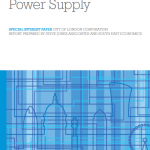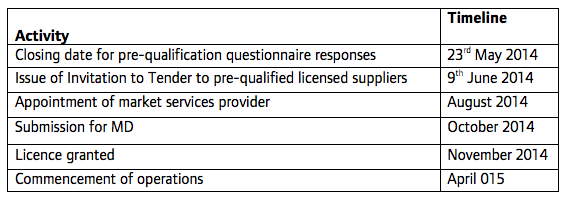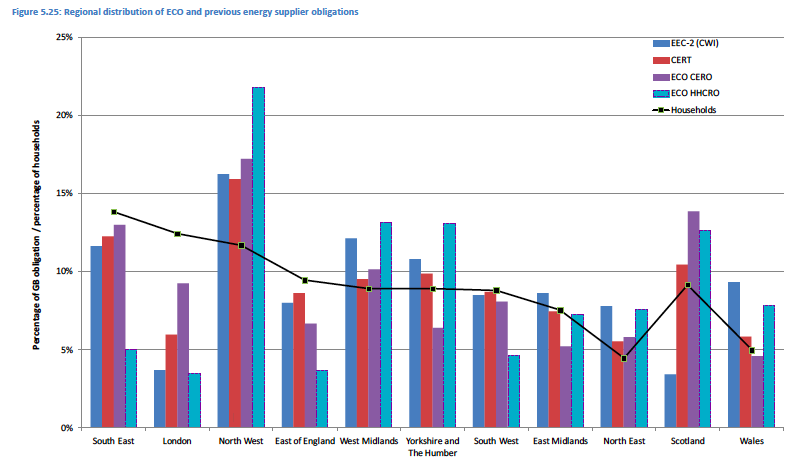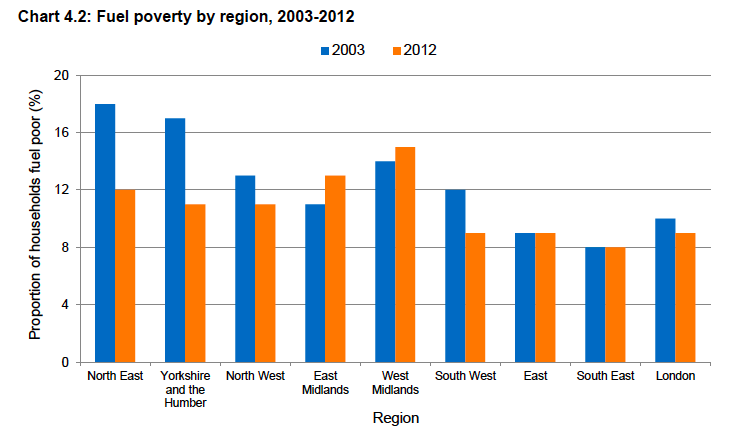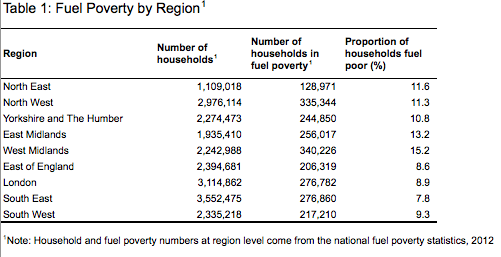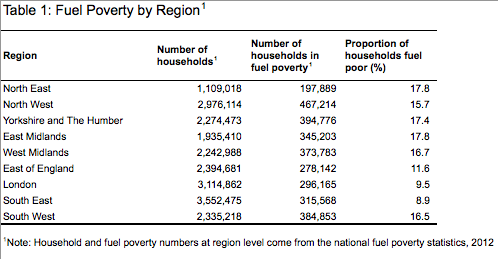Site search:
-
What’s new?
Energy for London Tags
Brent Buildings Camden Carbon Emissions CHP Cities Climate Adaptation Community Heating Community Initiatives Croydon Data DECC Decentralised Energy Distribution ECO Energy Costs Energy Efficiency Enfield FIT Fuel Poverty Funding Green Deal Hackney Haringey Housing Islington Lambeth Library Local Authorities Mayor Newham Ofgem Olympics Photovoltaics Planning RE:FIT RE:NEW Renewable Energy Retrofit Southwark Tower Hamlets Transport Waltham Forest Waste WestminsterEnergy Archives:
- February 2021 (1)
- January 2021 (15)
- December 2020 (15)
- November 2020 (9)
- October 2020 (3)
- August 2020 (5)
- July 2020 (3)
- June 2020 (4)
- April 2020 (10)
- March 2020 (5)
- February 2020 (2)
- January 2020 (3)
- October 2019 (1)
- September 2019 (4)
- August 2019 (2)
- July 2019 (1)
- August 2018 (1)
- November 2016 (8)
- October 2016 (8)
- September 2016 (2)
- August 2016 (8)
- July 2016 (14)
- April 2016 (12)
- March 2016 (16)
- February 2016 (8)
- January 2016 (4)
- December 2015 (1)
- November 2015 (1)
- October 2015 (16)
- September 2015 (3)
- June 2015 (1)
- May 2015 (1)
- April 2015 (1)
- March 2015 (1)
- February 2015 (1)
- January 2015 (1)
- December 2014 (18)
- November 2014 (4)
- August 2014 (8)
- July 2014 (7)
- June 2014 (25)
- May 2014 (8)
- April 2014 (4)
- March 2014 (12)
- February 2014 (7)
- January 2014 (13)
- December 2013 (11)
- November 2013 (15)
- October 2013 (15)
- September 2013 (18)
- August 2013 (5)
- July 2013 (20)
- June 2013 (33)
- May 2013 (8)
- April 2013 (16)
- March 2013 (25)
- February 2013 (14)
- January 2013 (20)
- December 2012 (23)
- November 2012 (23)
- October 2012 (25)
- September 2012 (14)
- July 2012 (12)
- June 2012 (43)
- May 2012 (20)
- April 2012 (8)
- March 2012 (40)
- February 2012 (39)
- January 2012 (40)
- December 2011 (22)
- November 2011 (40)
- October 2011 (33)
- September 2011 (48)
- August 2011 (40)
- July 2011 (58)
- June 2011 (41)
- May 2011 (80)
- April 2011 (38)
- March 2011 (33)
- February 2011 (25)
- January 2011 (24)
- December 2010 (3)
- November 2010 (7)
- October 2010 (6)
- September 2010 (7)
- August 2010 (1)
- July 2010 (2)
- June 2010 (4)
- May 2010 (1)
- March 2010 (3)
- February 2010 (3)
- December 2009 (5)
- November 2009 (2)
- October 2009 (3)
- July 2009 (3)
- June 2009 (1)
- April 2009 (1)
- March 2009 (1)
- February 2009 (1)
- January 2009 (1)
- December 2008 (2)
- October 2008 (1)
- September 2008 (1)
- July 2008 (1)
- March 2008 (2)
- January 2008 (2)
- October 2007 (1)
- September 2007 (3)
- July 2007 (1)
- March 2007 (1)
- February 2007 (3)
- November 2006 (3)
- August 2006 (1)
- February 2006 (1)
- May 2005 (1)
- February 2004 (1)
News
Haringey Solar Event
June 2014: Organised by Tottenham and Wood Green Friends of the Earth group. Details here.
The Future of London’s Power Supply
June 2014: “This report, commissioned by the City of London and authored by Stephen Jones Associates and South East Economics sets out the issues that London’s economy will face in meeting future rising power demands in the form of a road map. The road map is supported by materials set out in the report and provides a summary of the wider policy issues, London-specific issues and a timeline of key events.”
Various points made in the report include:
- It is anticipated that over the next thirty years there will be large increases in electricity demand in London. In the context of rising electricity prices, this may significantly impact end user bills.
- This report has been commissioned in support of the Greater London Authority (GLA) Long Term Infrastructure Investment Plan which will set out London’s strategic infrastructure requirements to 2050 across the main aspects of infrastructure including energy.
- Page 20 onwards of the report provides a useful summary of UKPN’s projections for London electricity demand growth over the period to 2030
Download here.
Timeline for License Lite
June 2014: Progress continues by the Mayor to obtain a junior electricity supply license – otherwise known as ‘license lite’. A tender was issued in March to start the process of attracting support from a fully licensed electricity supplier to help with the Mayor’s application to Ofgem (details here) and further information was issued by the Mayor in a recent press release ‘Mayor to become London’s smallest electricity supplier‘ which stated that “The ground-breaking move will permit him to offer the capital’s small electricity producers up to 30 per cent more for their excess energy than existing suppliers do, which he will then sell on to TfL, the Met and others at cost price.” The Mayor’s announcement attracted significant media interest including this piece in the Guardian,
A very good paper presented at the GLA’s Investment & Performance Board last week provides some further detail on issues that need to be considered as the ‘License Lite’ process progresses. The paper highlights that:
- A principal risk remains timing because the type of licence application is new to all parties and therefore timing remains difficult to predict.
- There is strong government support for the Mayor’s Licence Lite project. In May 2014 Matthew Pencharz and a GLA officer attended a round table discussion on licence lite chaired by the Secretary of State for Energy and Climate Change, Ed Davey to discuss progress of licence lite.
- A detailed draft economic model has been prepared in consultation with Transport for London, with whom discussions are in train for the purchase by it of electricity supplied from decentralised energy systems by the GLA under its licence.
- The financial outcome of the model is positive, but cannot be confirmed until tenders for the provision of the market services have been received from tenderers who have responded to the preliminary questionnaire during August of this year.
- Selected London boroughs have been briefed and provisionally identified the electricity capacity best sold under licence lite, together with other suitable public sector electricity generating capacity in London.
- The objective is for submission for a Mayoral Decision to approve the grant of the licence to the GLA by Ofgem and to approve entering into the necessary contracts to enable the project to proceed to completion in October 2014. Subject to that, the licence may be granted to the GLA in November 2014, operations commencing in April 2015.
British Gas data on energy efficiency retrofits in London
June 2014: Following an extensive evidence session on the Mayor’s domestic energy efficiency programme earlier this year – details of which are here – the Mayor has provided some additional information on work being undertaken by British Gas in London.
The letter states that “British Gas, with its London borough and housing association partners, has already committed to invest in excess of £36 million through eight schemes in London shown in the table below.
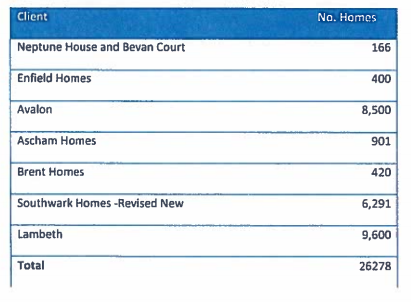 “These schemes are expected to deliver measures to over 26,000 homes across London.” British Gas has previously stated that they would earmark specific funding to London under the Energy Company Obligation (ECO) programme: how much this level has changed following the alternations to ECO proposed by government in their recent ECO consultation is not clear, but has been raised in a recent mayoral question.
“These schemes are expected to deliver measures to over 26,000 homes across London.” British Gas has previously stated that they would earmark specific funding to London under the Energy Company Obligation (ECO) programme: how much this level has changed following the alternations to ECO proposed by government in their recent ECO consultation is not clear, but has been raised in a recent mayoral question.
Posted in Energy Efficiency, News
Tagged Brent, ECO, Energy Efficiency, Enfield, Lambeth, Southwark
Leave a comment
“London urged to prepare for killer heatwaves that could melt roads”
June 2014: The Evening Standard reports that “Heatwaves that could kill hundreds of people and melt roads are expected to hit the UK every other year within the next few decades, experts warned today. The Met Office urged London’s authorities to plan for the conditions.”
The report follows an evidence session at City Hall at the London Assembly Environment Committee asking ‘Can London cope with severe weather events in the future?‘ where experts from Committee on Climate Change the National Centre for Atmospheric Science, the Met Office, and the Environment Agency gave evidence to the Committee – all of which can be viewed here.
Bunhill CHP
Energy efficiency programme for London’s ‘Cultural & Heritage’ sector
June 2014: The Mayor’s non-domestic energy efficiency programme, RE:FIT, recently held an event focused on improving the energy performance London’s Cultural & Heritage buildings. Presentations were provided by RE:FIT participants the Royal Botanic Gardens, Kew and Millfield Theatre, who undertook their RE:FIT project through the London Borough of Enfield. Details of the event can be read here – and an article on green improvements made at the Lyric Hammersmith theatre, who plan to work with the RE:FIT programme shortly, can be see here.
Seperately, the always innovative Arcola Theatre was profiled as a case study in the government’s recent solar energy strategy for their work on using solar PV together with energy storage technology (see page 48 of the strategy document here).
Posted in Energy Efficiency, News, Renewable Energy
Tagged Buildings, Enfield, Hackney, Hammersmith and Fulham, Photovoltaics, RE:FIT, Richmond
Leave a comment
London fares worst under government energy efficiency programmes
June 2014: An independent evaluation of the first year (2013) of the operation of the Energy Company Obligation (ECO), undertaken by the Centre for Sustainable Energy (CSE) for industry trade association Energy UK, has recently been published and highlights the low levels of funding directed to the capital.
The study ‘The ECO: An Evaluation of Year 1‘ includes a comparison of regional distribution of ECO spend and previous energy supplier obligations and reports – that across these major energy efficiency programmes:
“London has fared the worst, because although it has the second highest population, it obtained the second lowest number of EEC-2 cavity wall insulation installations (after Scotland), the third lowest number of CERT measures (after Scotland and the North East, which have lower populations), and the third lowest number of HHCRO households (after the East of England and the South West). London has a higher number of CERO households, but relative to its population this is still low.”
The following graph from the CSE report provides an illustration of this:
A summary of the report’s findings are available here. The full report is available here.
Government has previously stated that the ECO would support the uptake of ‘hard to treat’ measures, which would work better for London, and hence a regional target would not be needed (see para 53 onwards from November 2011 DECC ‘Green Deal & ECO consultation document‘). It may be that DECC now needs to look at this issue again under the current ECO consultation.
Mayor sets out serious concerns over ECO proposals
June 2014: The government announced a review of its ECO (Energy Company Obligation) programme in December 2013, against a backdrop of considerable media coverage, across many months, on the rising costs of consumers’ energy bills – all of which culminated in the Prime Minister’s alleged ‘cut the Green Crap‘ quote .
The ECO sets a legal obligation on energy suppliers to provide a reduction in carbon emissions through supporting the uptake of energy efficiency measures in the domestic sector. Each supplier (effectively the ‘Big 6’) has a specific target assigned to it by government depending on the number of domestic gas and electricity customers they supply. The ECO is paid for through a charge on all household energy bills – which is then collected by suppliers and is in turn used by them to help subsidise energy efficiency programmes – such as reduced cost insulation measures. Each household is estimated to pay around £50 a year to pay for ECO (approximately – it depends on the level of charge passed on by the supplier to their customer to meet the costs of their ECO target), which amounts to around £1.3bn a year total ECO spend. The proposals put forward in ECO consultation, with reductions in supplier target levels, and ‘stretching out’ of the targets to March 2017 (see below), are thought to reduce the cost of ECO to households by £30-35 ie a small reduction in energy bills (around 2% against an average energy bill of £1,300) – but also an overall reduction in the amount of money going to fund the government’s main efficiency programme. It should be noted that predecessor ‘supplier obligation’ programmes have operated in the UK since the mid-90s (EESoP, EEC, CERT, CESP) and have contributed significantly to helping improve the energy efficiency of UK homes (see section 6.13 of latest DCLG English Housing Survey report here).
Following the December press release, a consultation paper – the ‘Future of the ECO‘ – was released on 5 March, which closed for comments on April 16th. The consultation set out a wide number of proposals – of which the major ones were to:
- Extend the operation of ECO beyond the current March 2015 deadline to March 2017
- Set new targets for the three sub-obligation targets (CERO, CSCO and HHCRO)
- Reduce the major sub-target of the ECO – the Carbon Emissions Reduction Obligation (CERO) – target by 33 per cent.
The Mayor has posted his response to the government’s proposals highlighting a number of key concerns including that:
Posted in Energy Efficiency, News
Tagged ECO, Energy Efficiency, Fuel Poverty, Solid Wall Insulation
Leave a comment
London Fuel Poverty statistics
12 June 2014: Announcements on the government’s work around fuel poverty have been fairly quiet of late. Activity in 2012 and 2013 was mainly focused around defining what fuel poverty actually was (more of which here and here) which ran in parallel with trying to get ECO (the Energy Company Obligation), the government’s main funding mechanism to help fuel poor households, to work. Less than a year into operation, the ECO is now facing some major changes (further information here) as a result of the Prime Minister’s attack on ‘Green Crap‘ and the government’s plans on how to address fuel poor households seem tied up to a forthcoming strategy fuel poverty strategy, a consultation document on which is to be issued ‘in due course’.
In the meantime, DECC have today released their latest annual fuel poverty statistics (announcements of which are here and here) reporting that the “the number of households in fuel poverty in England was estimated at around 2.28 million, representing approximately 10.4 per cent of all English households. This is a fall from 2.39 million households in 2011 (a reduction of almost 5%).” The government provide fuel poverty numbers against both the old definition (where fuel poor households are those which have to spend more than 10% of income on energy) and the new ‘Low Income High Costs indicator (LIHC)’ definition.
The data sets are given some context in the annual fuel poverty report, also released today, which includes a regional breakdown of information, providing some data on the number of fuel poor households in London. This includes the following:
London is reported to have a lower incidence of fuel poverty than other regions. Page 41 of the report states that “a combination of smaller household sizes and greater access to the gas network in London is likely to limit the average depth of fuel poverty experienced by Londoners.” The report does also highlight that, compared to some other regions, London has experienced a smaller reduction to the number of fuel poor households over the decade (as illustrated above).
The breakdown of data against the LIHC and 10% indicators is also set out in two datasets (below) which differ slightly in numbers but basically report that close to 1 in 10 households in the capital may well be struggling to pay their energy bills. With the National Audit Office reporting last year that utility bills are forecast to increase above inflation to at least 2030, it’s clear that both householders and government need to place far greater urgency on making homes more energy efficient.
2012 sub-regional fuel poverty data: low income high costs indicator
2012 sub-regional fuel poverty data: 10% indicator
Posted in Library, News
Leave a comment
London Smart Grid Projects
May 2014: A new study on smart grid projects being undertaken across the EU also provides an excellent Smart Grids Project Map, and highlights a number of projects going forward in London.
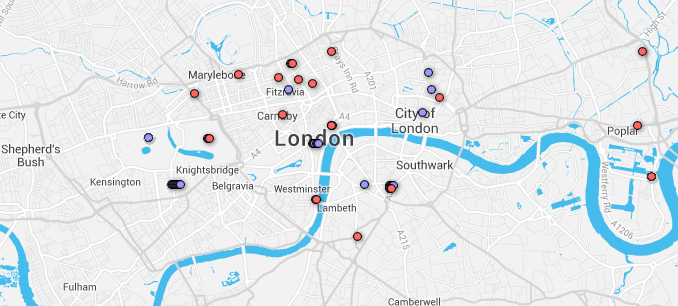 Brief details are provided on 30 smart grid projects in the capital including:
Brief details are provided on 30 smart grid projects in the capital including:



